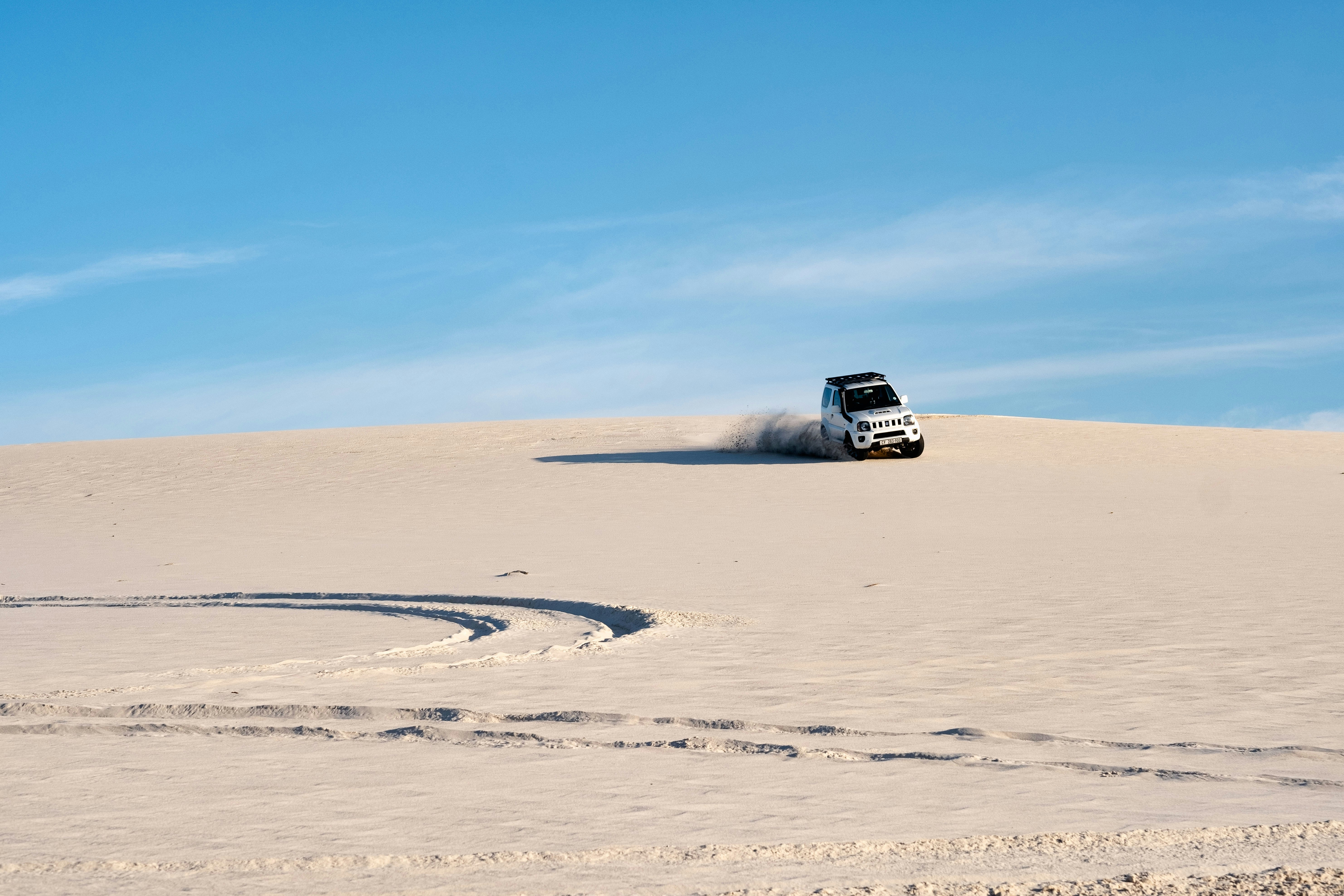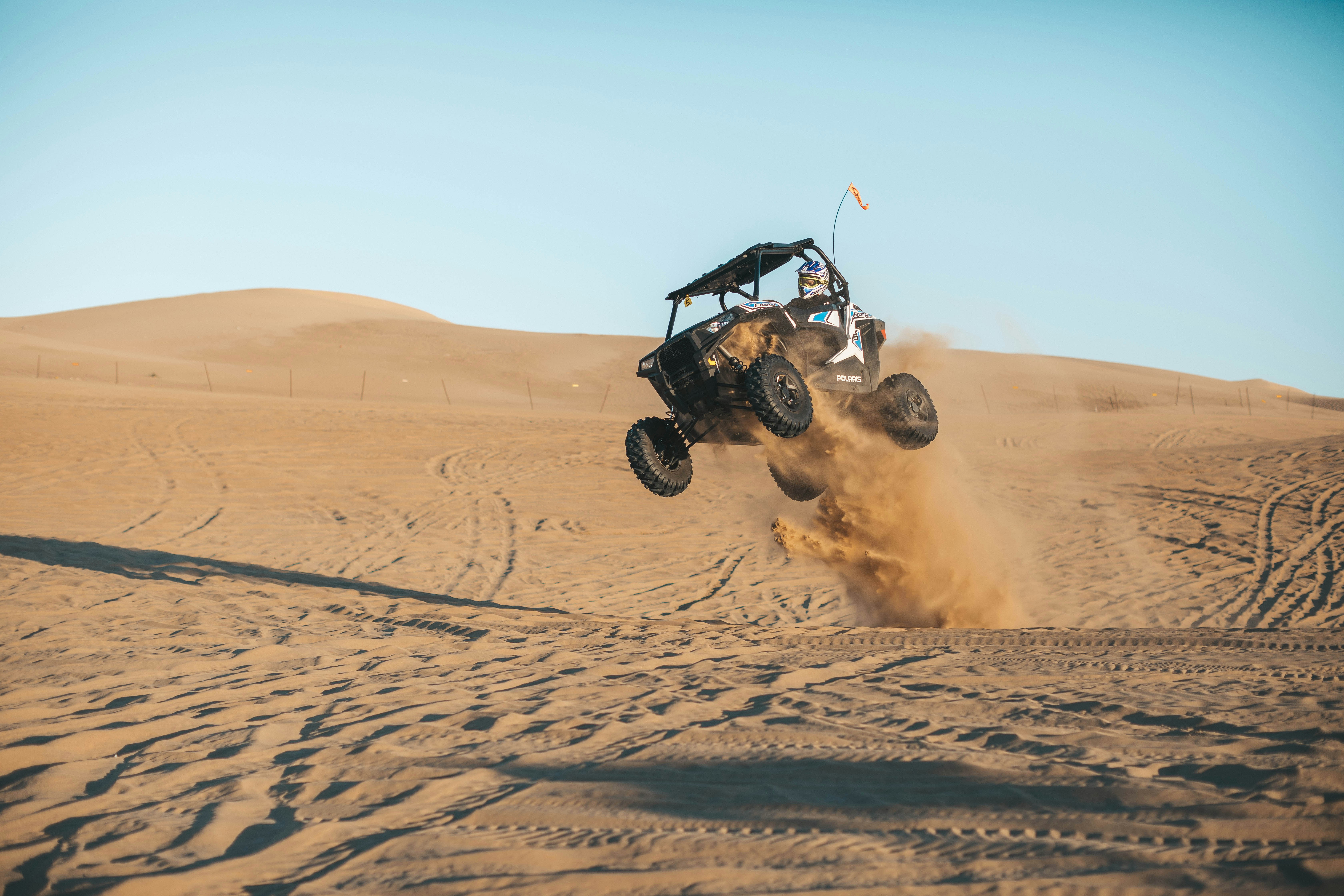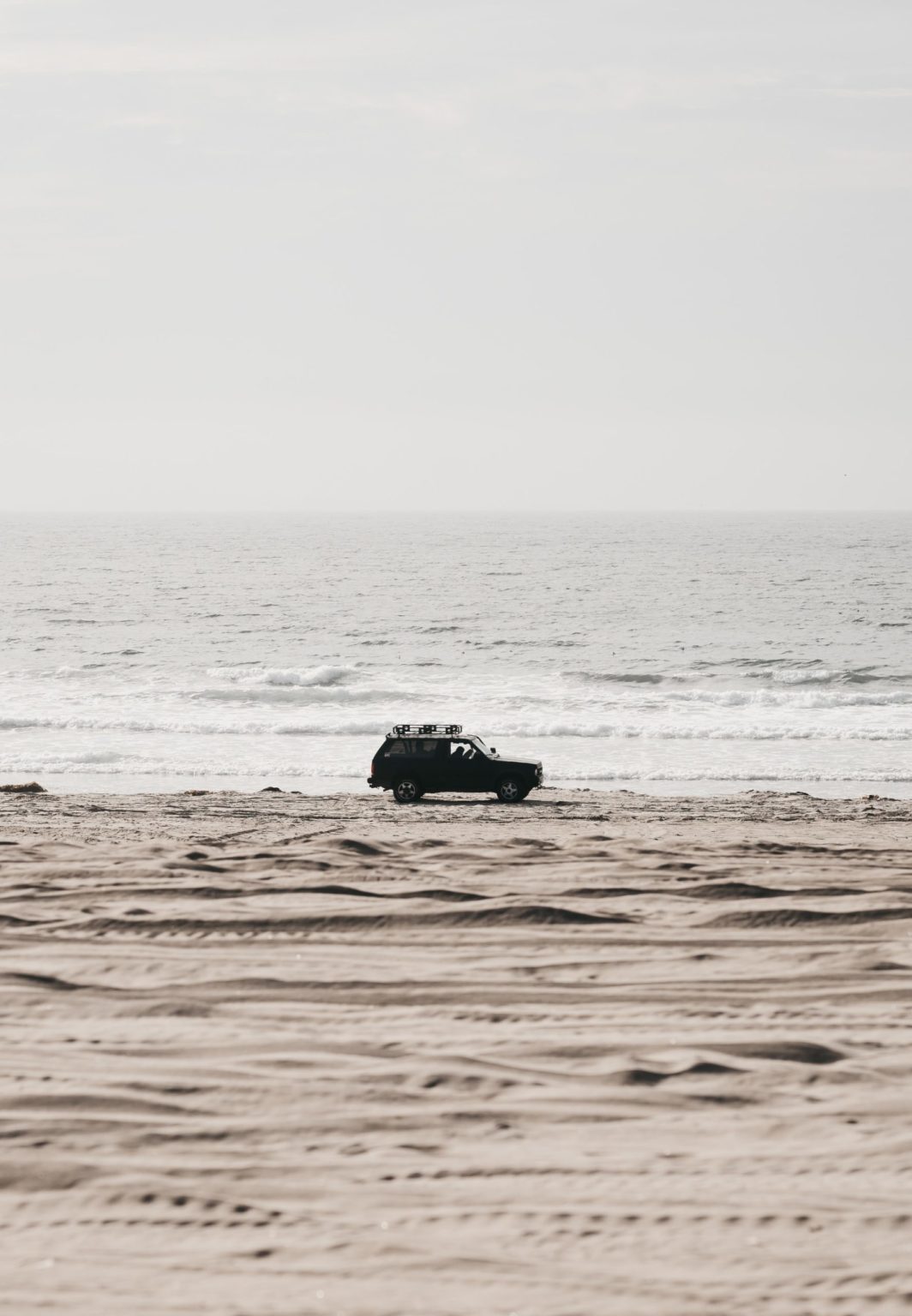One of the best things about owning an SUV is the ability to go off-road driving. Four-wheel driving along the beach surrounded by warm sand and crashing ocean waves is a fun pastime for outdoor enthusiasts. Whether you need to drive on the beach to access a remote camping site or you simply enjoy the thrill of varied terrain, check out these tips for beach driving to maximize your enjoyment.
1. Lighten your load
The lighter your car the better it will handle on the sand. Removing any unwanted fittings or miscellaneous items from your car can reduce the likelihood of getting bogged down.
2. Get your settings straight
Many new cars and SUVs have traction and stability control settings to improve performance and handling. These systems don’t like wheelspin and will either engage the brakes or throttle to slow spinning tires. Be sure to turn off these settings before getting on the sand.
3. Lower the tire pressure
Firm tires are ideal for city driving, but you want to use lower tire pressure when driving on the beach. Lowering the tire pressure spreads the tire out to increase the amount of surface area that contacts the sand.

4. Drive a designated beach car
You might want to invest in a budget-friendly beach car that you don’t mind putting to work off-roading. Instead of going to a dealership to test drive a new car, search for “used cars for sale near me” and see what Auto Auction Mall has to offer. The online car auction website gives buyers exclusive access to dealer-only car auctions in North America. You can find the best deal on a used car, pay wholesale prices, and have it shipped to you.
5. Maintain momentum
Loose, soft sand doesn’t provide much traction. The slower you drive on sand, the more time your vehicle has to sink and get stuck. Maintain a steady momentum to maximize your fuel and reduce the chances of getting bogged down.
6. Avoid getting bogged down
Beach driving conditions can quickly change, especially when an incoming tide changes the sand’s stability. Driving at low tide near the shoreline will help you avoid getting bogged down. Dark, flat sand provides a firmer surface to dive on.
7. Change speed gradually
Change your speed gradually to avoid getting stuck. Sudden stops will push sand in front of your tires and rapid acceleration will sink your vehicle into the sand as the tires spin. Let the sand’s traction stop your vehicle by removing your foot from the acceleration and coasting. Gently and steadily press the accelerator to speed up.

8. Know what your car insurance covers
NSW, Brisbane, and QLD drivers are responsible for having car insurance policy coverage for their needs. Compulsory Third Party (CTP) insurance and Comprehensive Insurance or Third Party cover are both important insurance policies to have in place. CTP insurance covers your liability in the event you cause a collision that injures you, your passengers, or other drivers or pedestrians. Third-Party insurance covers you in the event you cause an accident that damages your property or someone else’s property or vehicle.
Not all auto insurers offer the same prices on insurance policies or registration fees which is why you should compare car insurance QLD with iSelect.com.au. Whether your existing car insurance policy is up for renewal and you want a discount on your deductible or you need a car insurance quote for a new car, it’s easy to find great value from a leading insurance provider.
In addition to car insurance, you can also compare life insurance, home insurance, caravan insurance, boat insurance, motorcycle insurance, and business insurance with iSelect.
9. Straight up, straight down
The key to navigating a sand dune is to drive straight up and straight down. Never turn around on a sand dune, always reverse back down in a straight line. Always avoid driving side-on when on a dune as you can quickly roll your vehicle on a gradual slope.
10. Bring a shovel
Getting bogged down is inevitable when you drive on the beach. When your vehicle gets stuck, stop trying to drive out of it and try to reverse out to try and create a ramp. If that doesn’t work trying letting out more air from your tires or dig yourself out. Always pack a shovel in your vehicle in case you get bogged down.
Keep these beach driving tips in mind next time you head out for a day of fun in the sun.














